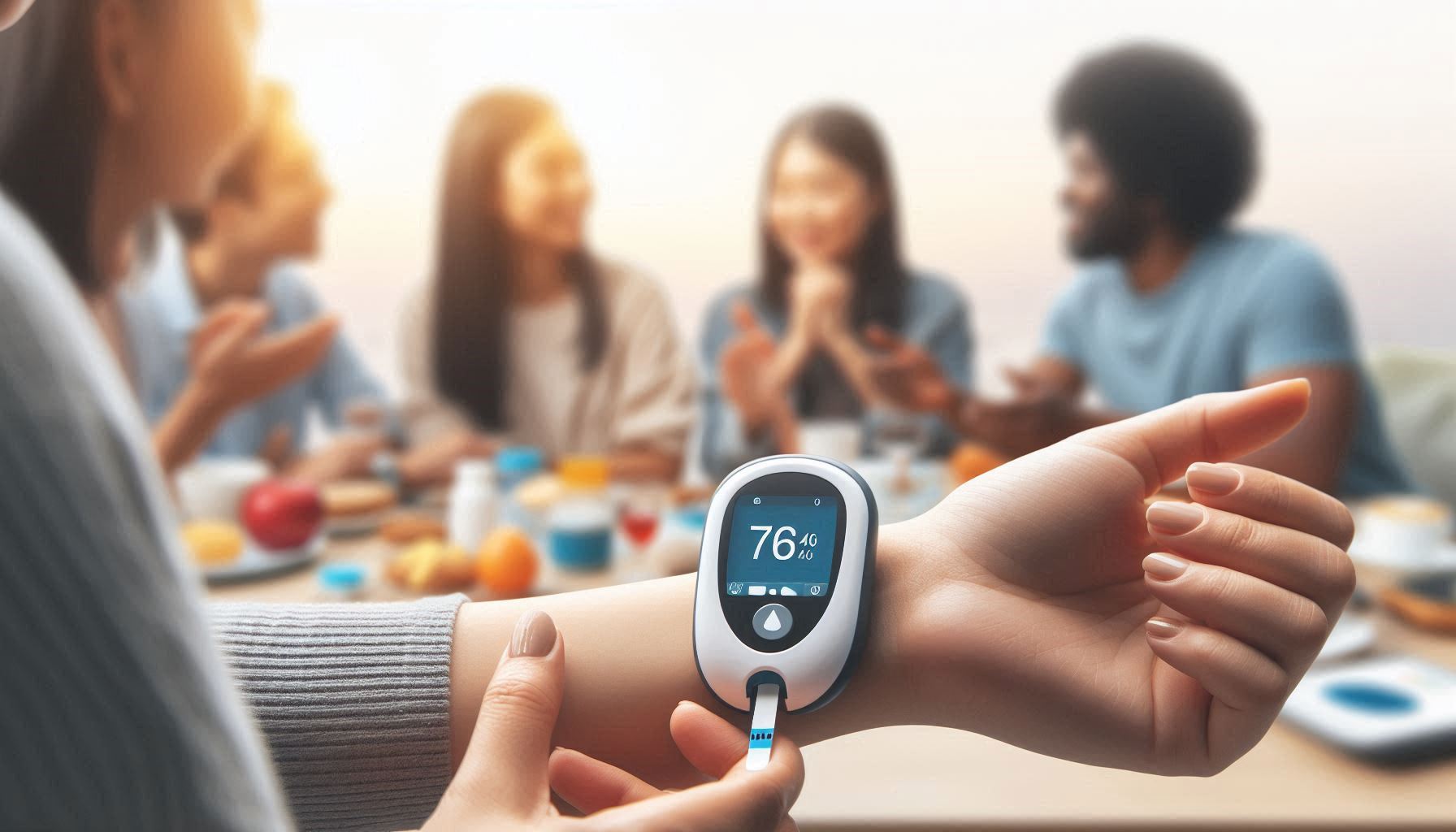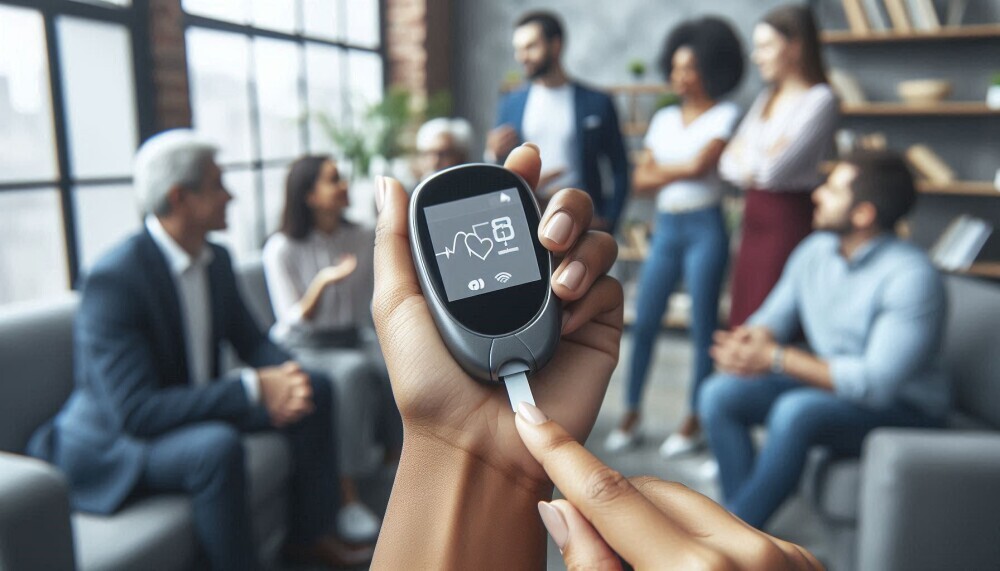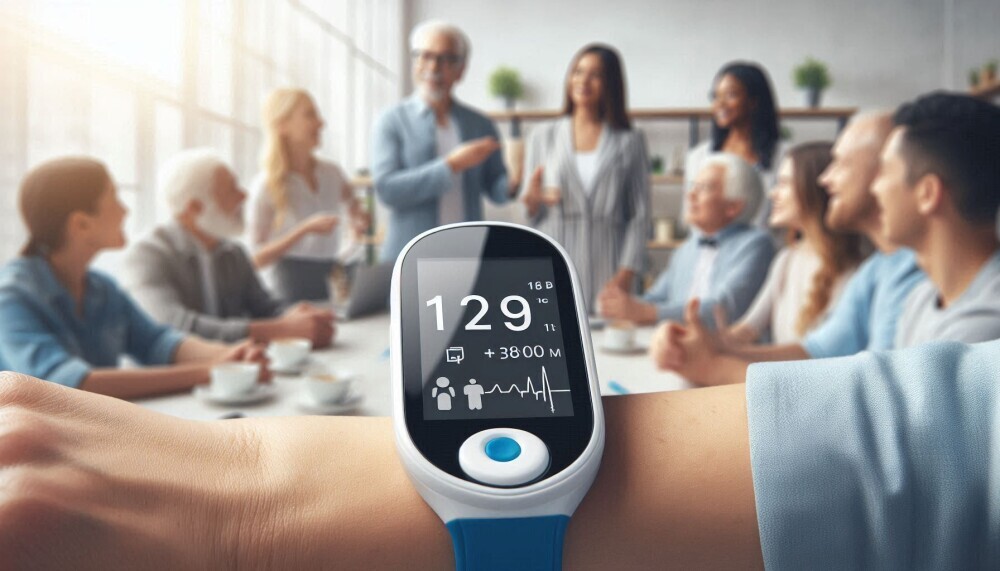The Rise Of Non Invasive Glucose Monitoring: Are Needle Free Wearables The Future? This is the subject for this article. Wearable health tech is on a charge right now. New advanced tech is appearing on the market at a rapid rate. Let’s begin!
Introduction
For decades, glucose monitoring for people with diabetes and those at risk of blood sugar irregularities has relied heavily on finger pricks or invasive continuous monitoring devices. These methods, while effective, come with discomfort, cost, and inconvenience. Now, a new wave of technology promises to change the experience entirely.
Non invasive glucose monitoring wearables that require no needles at all. By using advanced optical, thermal, or electromagnetic sensors, these devices aim to measure glucose levels through the skin without breaking it, providing painless and real time results.
The potential impact of these devices is huge. They could improve quality of life for millions of people who need to monitor glucose regularly while also enabling preventive health monitoring for those without a diabetes diagnosis. As technology evolves, needle free wearables are edging closer to widespread adoption.
In this article, we will explore how they work, their benefits and limitations, the latest developments, and whether they truly represent the future of glucose monitoring.
What is non invasive glucose monitoring
Non invasive glucose monitoring refers to measuring blood glucose without penetrating the skin. These wearables typically use one of several sensing techniques to detect glucose levels by analysing signals from the skin surface or just beneath it.
Common methods include:
• Optical spectroscopy which uses specific wavelengths of light to detect glucose concentrations in tissue
• Electromagnetic sensing that measures the dielectric properties of tissue
• Thermal emission analysis which correlates heat patterns to glucose levels
• Reverse iontophoresis that draws glucose molecules to the skin surface for measurement
The goal is to give users an accurate reading in seconds without causing discomfort or requiring consumable supplies like test strips.
Key features to look for in a needle free wearable
Core features for non invasive glucose monitoring devices
• Real time or near real time glucose readings
• Mobile app integration for data logging and trends
• Alerts for high or low glucose levels
• Compact and lightweight design
• Long battery life
• Calibration free operation or minimal calibration needs
• Compatibility with fitness and health tracking platforms
• Waterproof or sweat resistant construction
How they work
The sensors in non invasive glucose monitors detect signals that correlate with glucose levels. In optical systems, light penetrates the skin and reflects back with specific patterns that vary depending on glucose concentration. The device’s algorithms then process this data and produce a glucose estimate.
Electromagnetic and thermal systems work similarly but use different types of energy to interact with the body. These devices often connect wirelessly to a phone or watch app, where readings are displayed along with trend graphs, averages, and predictive alerts.
While promising, accuracy remains a key challenge. Many current prototypes require calibration against a standard blood glucose test, though advances in sensor design and artificial intelligence are gradually reducing the need for this step.
Benefits of non invasive glucose monitoring
Comfort and convenience
No finger pricks or sensor insertions means less pain and fewer supplies to buy.
Continuous data
Some devices offer round the clock tracking, allowing users to catch trends and fluctuations that spot checks might miss.
Ease of use
Simply wearing the device can be enough to get readings, making it suitable for people of all ages.
Lifestyle integration
Many designs resemble fitness trackers or watches, blending seamlessly with daily wear.
Preventive health
Non diabetics can also use the technology to monitor how food, exercise, or stress impacts blood sugar.
Pros and cons
Pros
• No needles or invasive components
• Reduced risk of infection or skin irritation
• Potential for constant monitoring
• User friendly and discreet
• Can help detect glucose trends over time
Cons
• Accuracy still improving compared to invasive systems
• Some models may need occasional calibration
• Limited availability and regulatory approval in some regions
• Can be expensive in early adoption stages
• May not yet be suitable for insulin dosing decisions without confirmation tests
Price ranges
The cost of non invasive glucose monitoring devices varies depending on features and accuracy levels.
• Entry level consumer focused devices may start from £150 to £250
• More advanced models with continuous tracking can range from £300 to £500
• Research grade or professional systems can cost more than £700
Because there are no consumables like strips or replacement sensors, long term costs may be lower than with traditional monitoring methods.
Who should use them
Best suited for
• People with pre diabetes or those at risk who want to track lifestyle impacts
• Type 2 diabetes patients who do not require frequent insulin dosing adjustments
• Health conscious individuals interested in metabolic health tracking
• Athletes monitoring the impact of training and nutrition on glucose levels
• Elderly users who find finger pricks difficult
Less suited for
• Type 1 diabetes patients needing highly accurate dosing data
• Users in regions without regulatory approval or medical support for the devices
• People unwilling to confirm results with a standard test if accuracy is in doubt
How to get the best from your needle free wearable
Tips for optimal use
• Wear the device consistently at the same location for reliable readings
• Keep skin clean and dry for better sensor contact
• Use the companion app to review daily patterns and identify trends
• Pair glucose data with meal, exercise, and sleep tracking for deeper insights
• Follow manufacturer recommendations for charging and maintenance
• Understand that no technology is perfect and occasional confirmation tests are wise
Limitations and current challenges
The biggest challenge remains accuracy. Biological differences between individuals, skin thickness, hydration levels, and environmental conditions can all affect readings. Researchers are working on advanced algorithms to filter out noise and improve precision.
Another challenge is gaining widespread regulatory approval. Health agencies require robust evidence that these devices are safe and reliable enough for daily glucose management. Many products are still in testing or limited release.
The future outlook
As sensor technology improves, non invasive glucose monitoring could become the standard for both medical and wellness applications. Future wearables may combine glucose tracking with other metabolic and cardiovascular metrics, offering a complete picture of health in real time. Miniaturisation and advances in flexible electronics will make devices even more comfortable and discreet.
The ultimate goal is a device that matches or exceeds the accuracy of invasive monitors while requiring zero maintenance beyond wearing it. Such innovation could significantly improve diabetes management and preventive healthcare worldwide.
Frequently asked questions
1. Are non invasive glucose monitors as accurate as finger prick tests
Not yet in all cases. Accuracy is improving rapidly, but many models are recommended for trend monitoring rather than dosing decisions without confirmation.
2. Do these devices require calibration
Some still do, often once or twice a day, while newer designs aim to eliminate calibration entirely.
3. How long can I wear the device
Depending on the model, wear time ranges from several hours to multiple days or weeks.
4. Can children use non invasive glucose wearables
Yes, but device suitability and comfort should be assessed individually, and medical guidance is advised.
5. Are they waterproof
Some are water resistant or waterproof, but always check the manufacturer’s specifications.
6. Will they replace traditional glucose monitoring soon
They are unlikely to fully replace invasive methods immediately, but they will increasingly complement them and may become the main method in the future.
Conclusion
Non invasive glucose monitoring is one of the most exciting developments in wearable health technology. By removing the need for needles, these devices promise to make glucose tracking more comfortable, accessible, and appealing to a wider audience. From managing chronic conditions to supporting preventive wellness, the possibilities are vast.
While challenges remain in achieving perfect accuracy and broad approval, the progress made in recent years is remarkable. As the technology matures, needle free wearables could indeed become the future standard, reshaping how millions of people engage with their health every single day.
Our Thanks!
Many thanks for taking the time to read this article on The Rise Of Non Invasive Glucose Monitoring: Are Needle Free Wearables The Future? We hope that you have enjoyed the information provided and found it to be helpful. Why not take a look at one of our related articles which is titled How Non Invasive Glucose Tracking Works: Optical Sensors Explained.
Please let us know in the comments which type of wearable health tech device you are currently using or plan to buy in the future! The comments section is just underneath this article!
**Here is a bit of transparency. Our website www.vertevia.com does contain affiliate links and Amazon links. So, if you did make a purchase through the website, we may receive a small commission. This is at no extra cost to you whatsoever. It’s just a way for you to support us as we continue to bring you top quality content**
All the best!
Eamon





